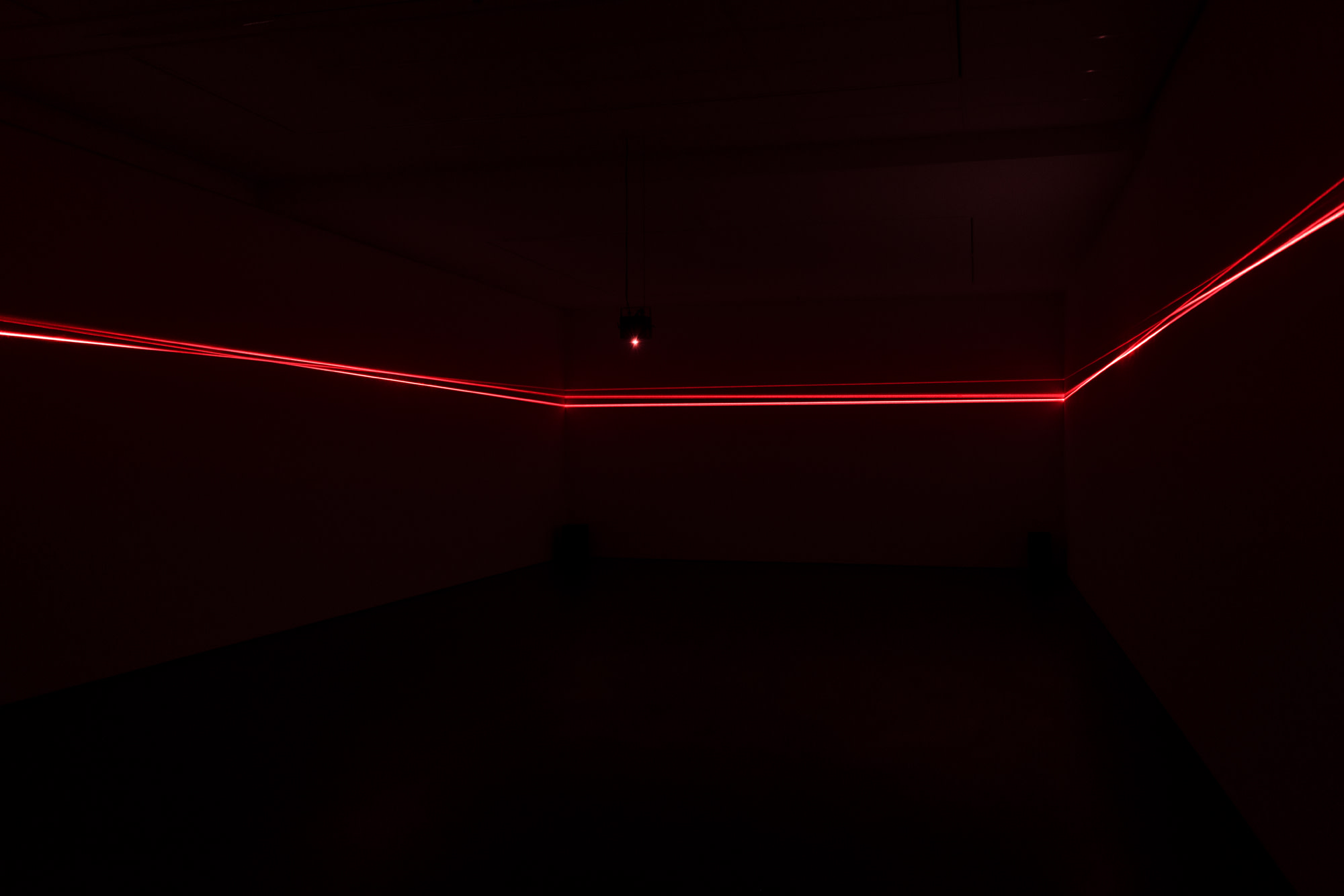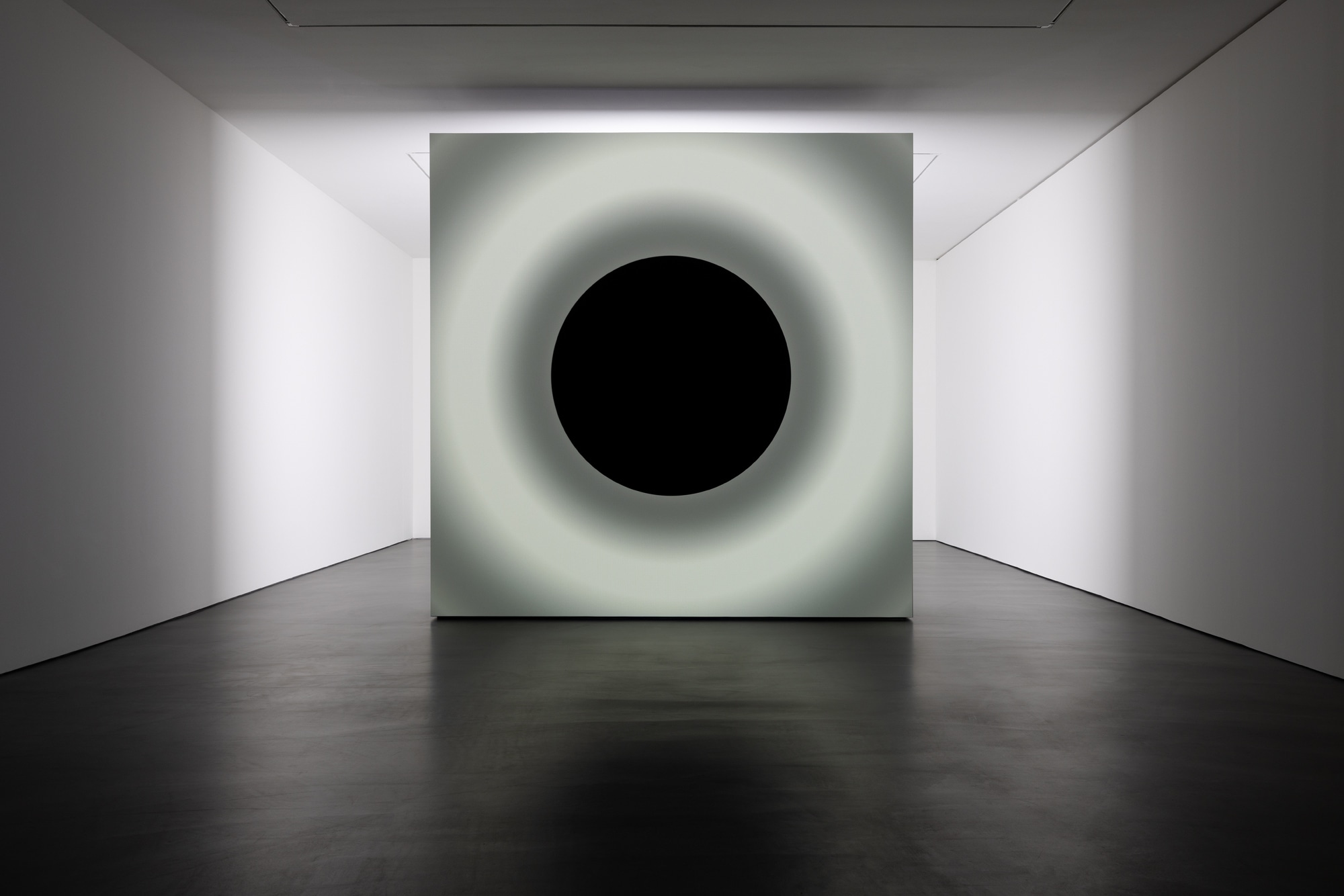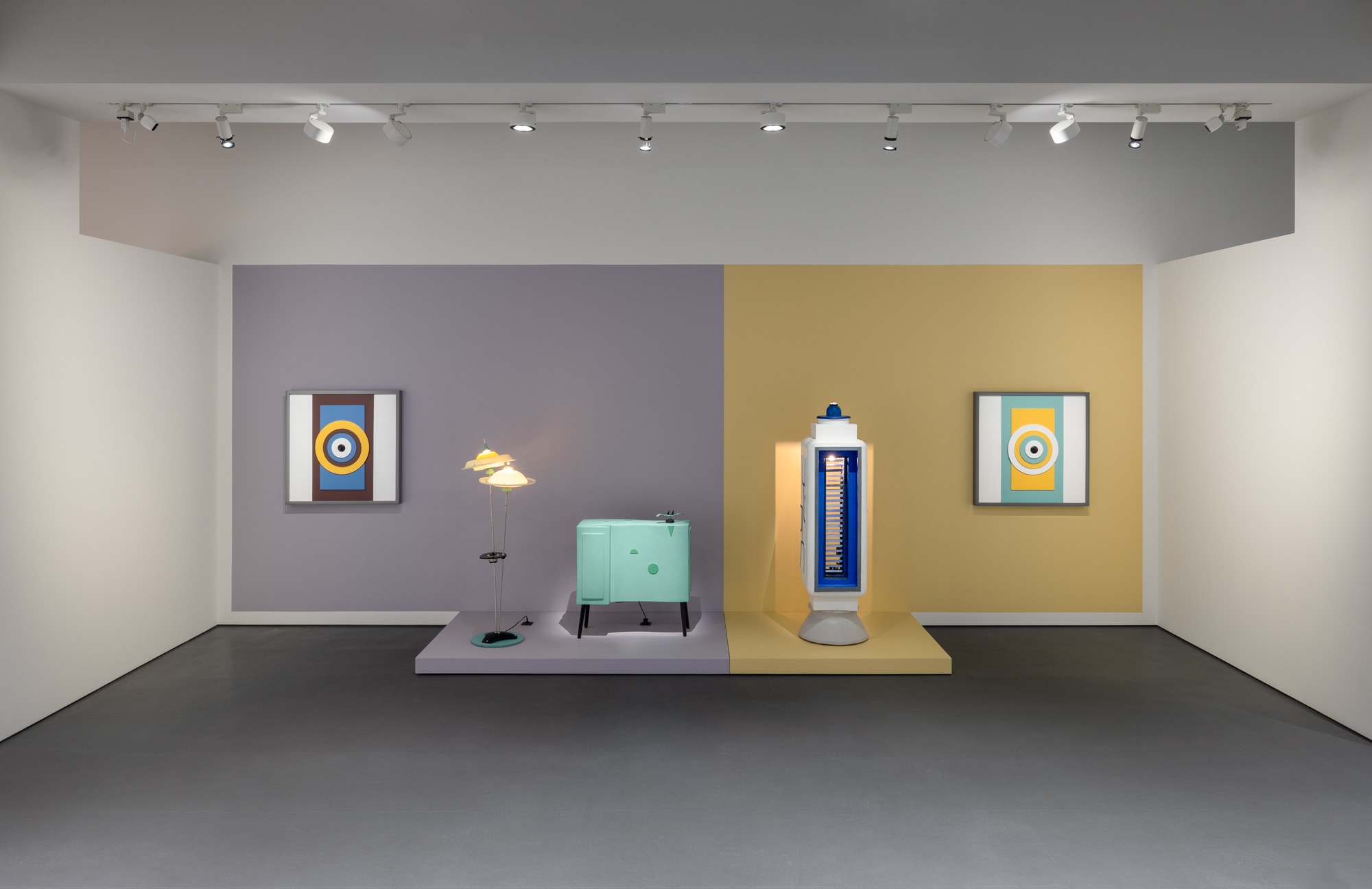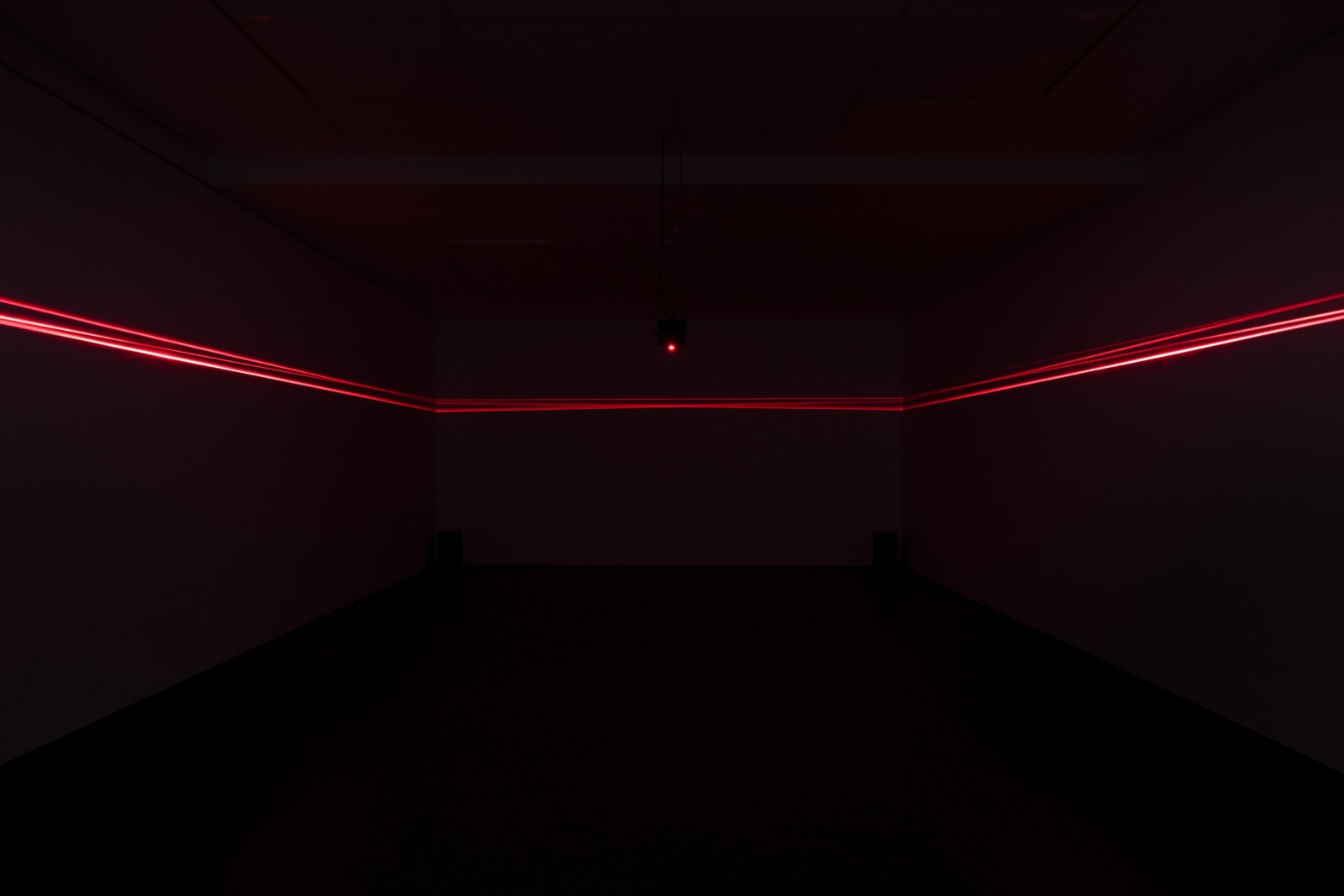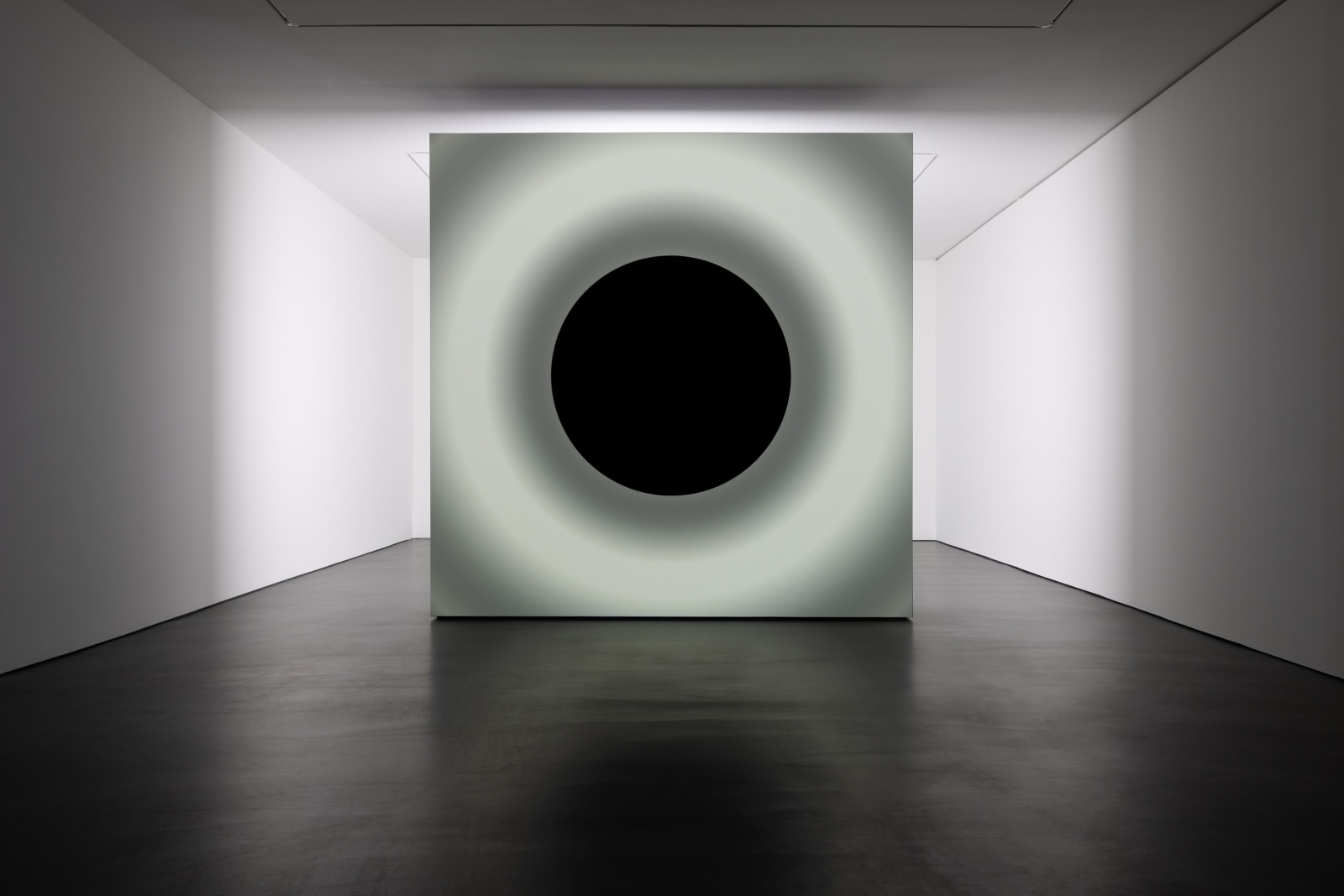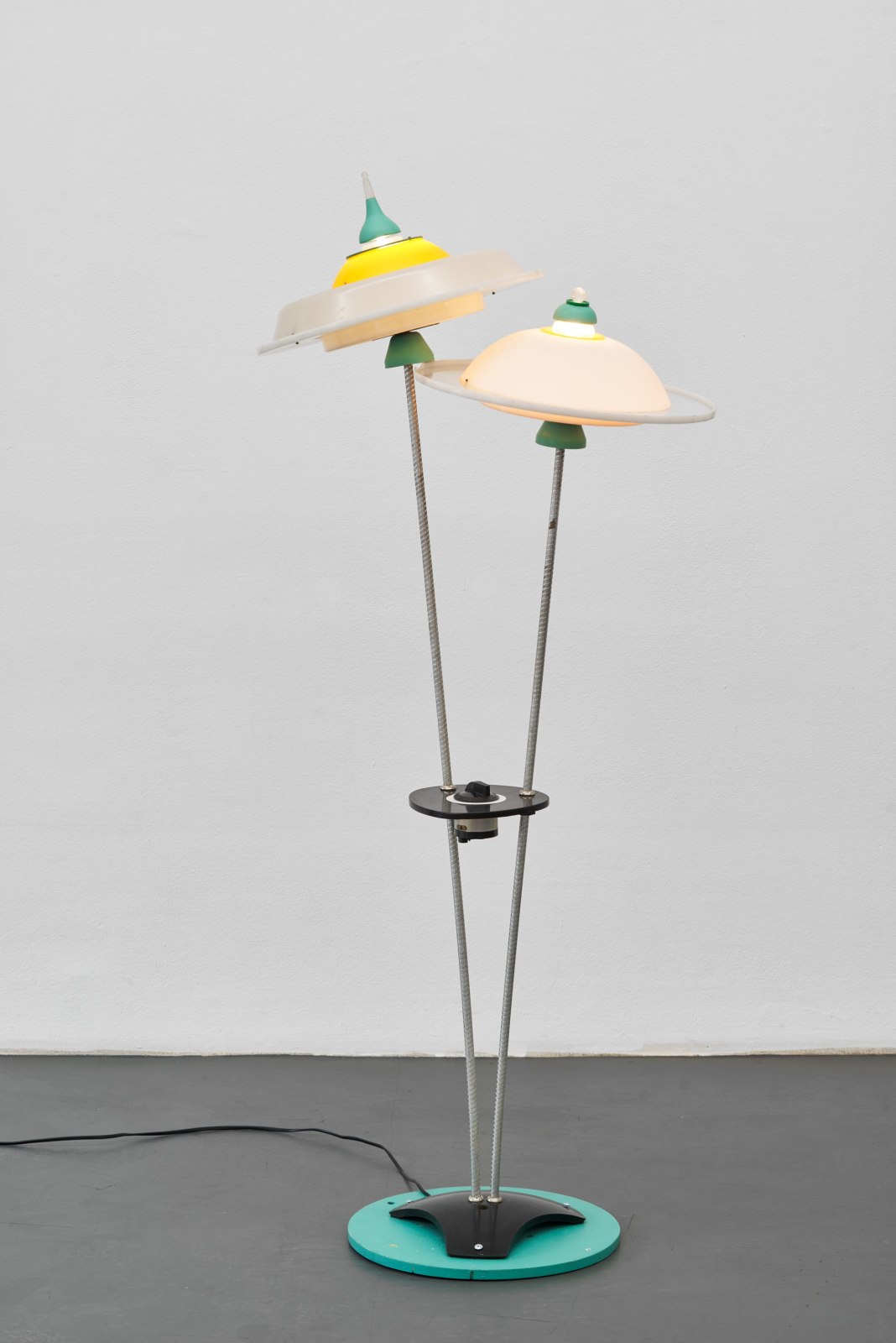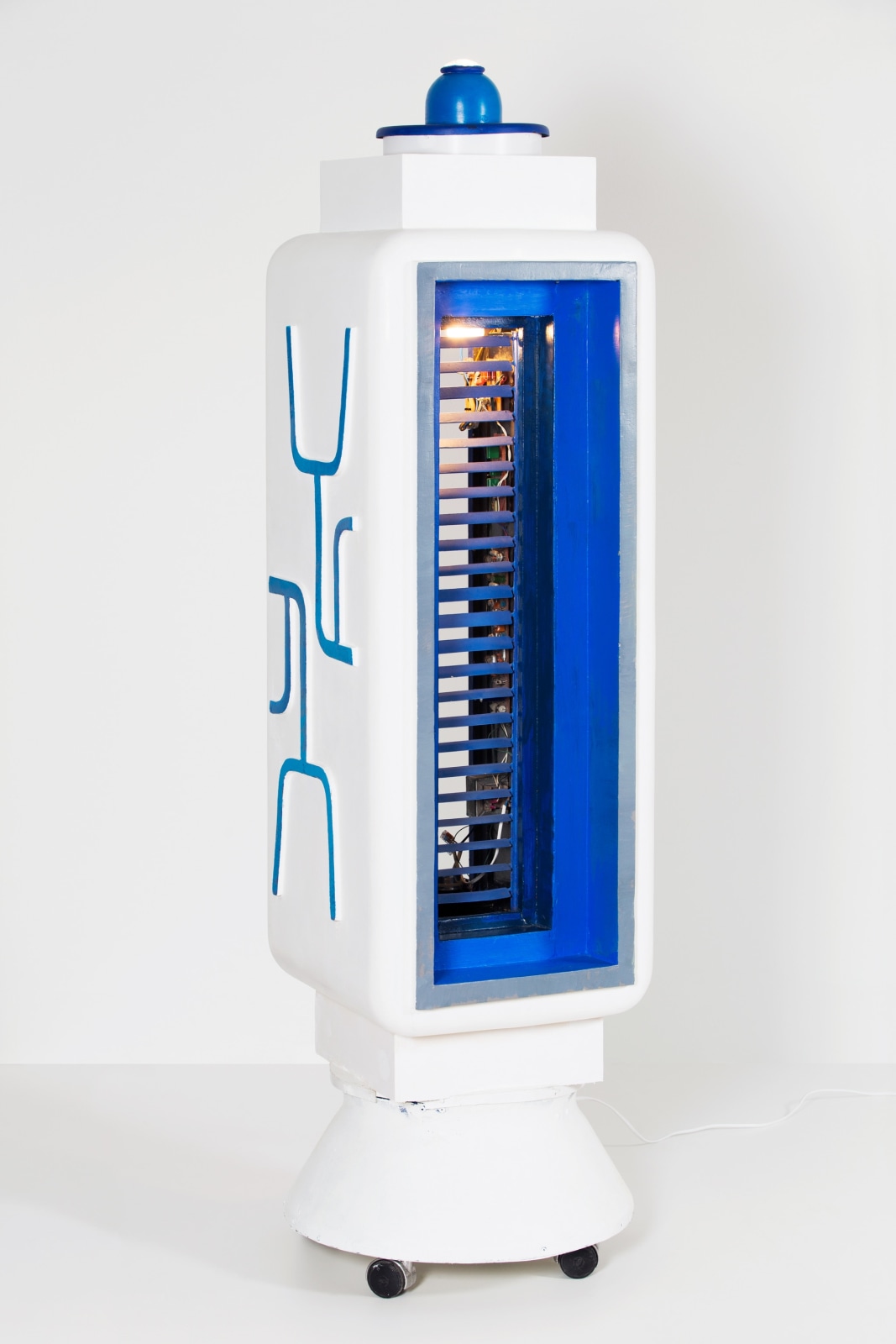Overview
Esther Schipper is pleased to announce an exhibition by Grönlund-Nisunen, Ryoji Ikeda, and Kaarel Kurismaa, organized with Olivier Renaud-Clément. Grönlund-Nisunen and Ikeda each present an immersive light and sound environment, each in half of the main gallery space. Alongside these, a selection of new, recent, and historical works by pioneering Estonian sound and installation artist Kaarel Kurismaa will be on view in the bookstore area.
The main gallery space pairs the work of Grönlund-Nisunen and Ryoji Ikeda for the first time, drawing on long-standing personal and professional connections through previous projects. Their respective oeuvres share the innovative use of sound and light to create environments that evoke strong corporeal and phenomenological responses. Presenting the two side-by-side highlights both similarities and distinctions in their practices. The exhibition is Grönlund-Nisunen’s fifth with the gallery.

Grönlund-Nisunen
A central motif in the practice of the Finnish artist duo Tommi Grönlund and Petteri Nisunen, who began working together as Grönlund-Nisunen in 1993, is transforming their curiosity about elemental forces such as gravity, magnetism, or radiation into quietly evocative works that convey fundamental principles of these conditions. Grönlund-Nisunen’s works often employ the behaviors of natural elements to communicate specific or generalized physical phenomena. Thus, for example, air or water—in liquid or gaseous form—can become indicators of time, pressure, electrical currents, and/or energy. Similarly, light and sound function in their most basic form—as electromagnetic radiation or sound waves—yet can have an outsized impact. Executed with custom-made or pre-produced industrial materials, their work’s technical appearance is—perhaps paradoxically, but herein lies the very mystery of their work’s transformative power—tied to a visceral experience of curiosity, wonder and cognition.
The new work, Scattered Horizon, presents three swaying lines, which hit the walls of the otherwise dark exhibition space. The horizon is generally taken for granted as a singular, fixed occurrence in nature, so the sight of it elevated, tripled and in constant movement can have a slightly disorienting effect. A complementary sound element of three sine wave tones modulating with each other adds another physical sensation, as the low frequency vibrations can be felt in one´s body. In this context, the term “immersive” describes the encounter in a literal sense: engaging visitors in a multi-sensory experience, the work is visible, audible, and palpable. We depend on the stability of our surroundings both physically and psychologically; that is why losing the stabilizing horizon line, and adapting to it, can be experienced either as meditative, thrilling or even uncomfortable, depending on the visitor. Scattered Horizon plays on these associations, but also leaves visitors the freedom to explore their physical presence and emotional response.

Ryoji Ikeda
Japan’s leading electronic composer and visual artist Ryoji Ikeda focuses on the essential characteristics of sound itself and that of visuals as light by means of both mathematical precision and mathematical aesthetics. Ikeda has gained a reputation as one of the few international artists working convincingly across both visual and sonic media. He elaborately orchestrates sound, visuals, materials, physical phenomena and mathematical notions into immersive live performances and installations.
Ryoji Ikeda’s work point of no return (2018) consists of a wall module with two light projections. One side of the wall shows a constant white circle, cast by a powerful theater light. The other side of the wall functions as a screen for a video projection, showing an abstract visual of a pulsating black circle. The video is continuously generated by a software and its pattern never repeats itself. The spatial conflation of two luminous opposites creates a destabilizing and immersive physical effect. The work’s title borrows from an astrophysics’ term that defines the point at the event horizon of a black hole, where materials can no longer escape the hole’s gravitation force.

Kaarel Kurismaa
A pioneering figure in Estonian art history, Kaarel Kurismaa is best known for his kinetic art works, sound installations, and large-scale public commissions. Bright and playful at first sight, his sculptures sometimes resemble objects one might expect to encounter in fairytales or dreams where a wardrobe can speak and household items dance. Generally constructed from readymade materials, Kurismaa’s works seem perfectly suited to feature in animated films or fantastic plays. Yet their humorous and whimsical presence also has an uncanny quality, evoking childhood memories and moments of emotional urgency. Similar to the way shapes can morph in twilight, Kurismaa’s kinetic sculptures appear to hover on the brink of transformation: circles can become eyes, delicate rotating protrusions evoke limbs, and the work’s sounds evoke utterances.
Kaarel Kurismaa is the first and most prominent sound art and sound installation artist in Estonia. A preeminent figure in kinetic art, his practice also encompasses painting, animation, public space monumental art and stage installations. Following his studies at Tartu Art School in late 1950s, Kurismaa entered the monumental painting department at the State Art Institute in 1965. Kurismaa’s working as an artist-decorator for the Tallinn Department Store brought him into contact with a plethora of readymade materials and forms, as well as giving him a platform to experiment. Having produced his first kinetic object in 1966—the first known kinetic object in Estonian art history—Kurismaa, in the 1970s increasingly influenced by Pop Art, continued to combine and reuse readymade materials, working around the limited access to consumer products in the USSR. The artist was also influential in Estonian new music scene throughout the decade, collaborating with the cult progressive rock group Mess and producing stage design for their performances. From the late 1970s, Kurismaa worked on animated children’s films, painting, and public commissions, realizing several kinetic and sound objects during the 1980s, though some of them have since been since demolished or lost. He resumed his focus on sound in the 1990s, concentrating on creating site-specific installations interacting with space using visual and acoustic means.
